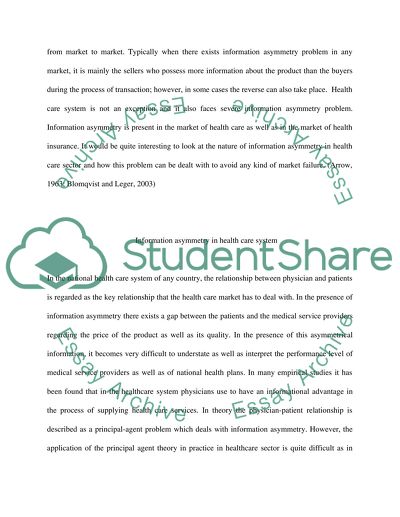Cite this document
(Information Asymmetry Problem in Health Care System Term Paper, n.d.)
Information Asymmetry Problem in Health Care System Term Paper. Retrieved from https://studentshare.org/health-sciences-medicine/1556525-lemons-and-peaches-the-impact-of-asymmetrical-information-on-healthcare-in-the-nhs-and-how-this-can-be-addressed-through-the-national-insurance-system
Information Asymmetry Problem in Health Care System Term Paper. Retrieved from https://studentshare.org/health-sciences-medicine/1556525-lemons-and-peaches-the-impact-of-asymmetrical-information-on-healthcare-in-the-nhs-and-how-this-can-be-addressed-through-the-national-insurance-system
(Information Asymmetry Problem in Health Care System Term Paper)
Information Asymmetry Problem in Health Care System Term Paper. https://studentshare.org/health-sciences-medicine/1556525-lemons-and-peaches-the-impact-of-asymmetrical-information-on-healthcare-in-the-nhs-and-how-this-can-be-addressed-through-the-national-insurance-system.
Information Asymmetry Problem in Health Care System Term Paper. https://studentshare.org/health-sciences-medicine/1556525-lemons-and-peaches-the-impact-of-asymmetrical-information-on-healthcare-in-the-nhs-and-how-this-can-be-addressed-through-the-national-insurance-system.
“Information Asymmetry Problem in Health Care System Term Paper”. https://studentshare.org/health-sciences-medicine/1556525-lemons-and-peaches-the-impact-of-asymmetrical-information-on-healthcare-in-the-nhs-and-how-this-can-be-addressed-through-the-national-insurance-system.


